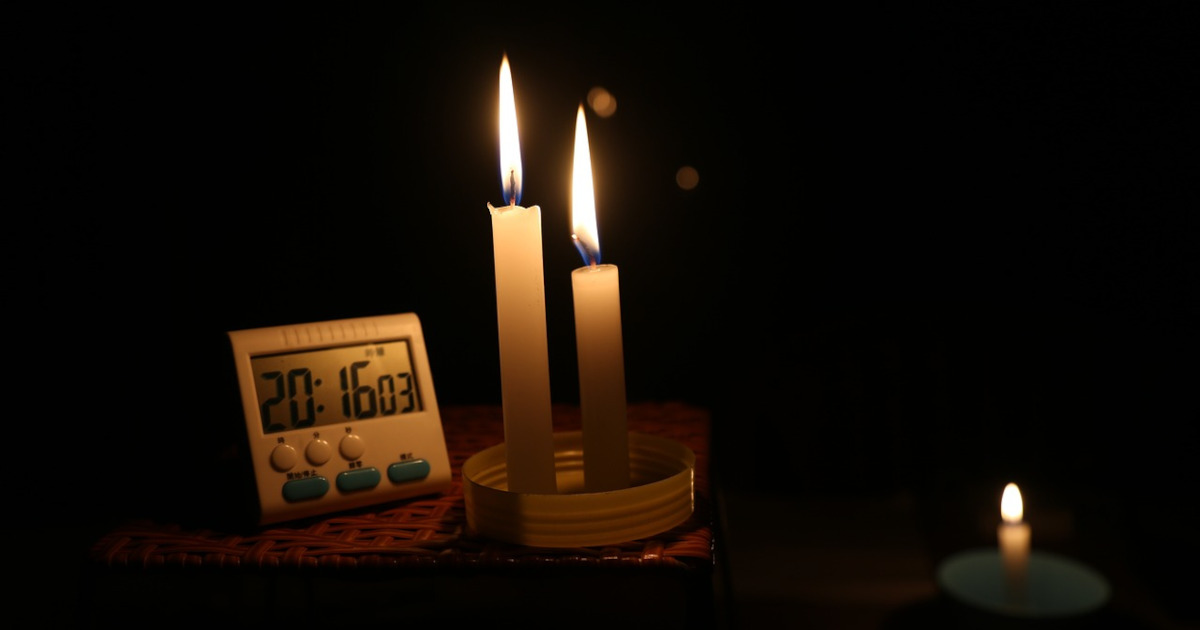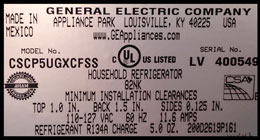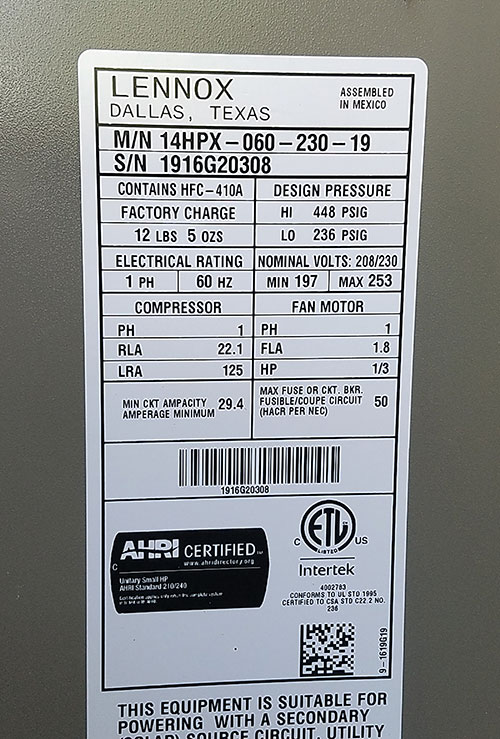Choosing the right generator with enough capacity provides backup power for an entire home during an outage.
Whole House Generator Size
When the power goes out, a whole house generator must do the job of the electric utility and supply the entire house with power. By managing power, a generator with less capacity than the electric utility connection can power the house. A whole house generator system manages power by giving priority to the most essential circuits and a lower priority to loads the homeowner decides are less important.
In one example, the homeowner might give higher priority to the central air conditioner and lower priority to the electric dryer. If the air conditioner is not running, priority shifts to the dryer and it is allowed to run until the central air conditioner takes priority.
Some heavy loads could overload or come close to overloading the generator. In a home with 15kW of supplemental baseboard heating, the heat strips would use three-fourths of a 20kW generator’s power capacity and not leave enough power for the rest of the home’s circuits. In this case, because the heating strips are supplemental, the homeowner might choose to prevent baseboard heating from using generator power by locking it out with power management.
Not every homeowner chooses to allow the generator to manage power. Every circuit must be available, even during a power outage. The generator must have enough capacity to supply all the household loads including those most homeowners would label unnecessary.

Whole House Generator Sizing
Whole House Generator Sizing starts with a load calculation for the entire home. The National Electrical Code spells out the load calculation for determining utility service capacity in NEC article 220 and the tables (T-220-x) included within the article.
In this article, we use a table to list all the calculations required for each type of load. If a calculation does not apply, don’t enter it on the table. For example, don’t include an electric dryer for a home with a gas dryer.
However, some loads must be included in the calculation even if the home does not have a circuit dedicated to that load. For example, the minimum number of small kitchen appliance circuits is two because even if circuits were not dedicated to kitchen appliances, the homeowner will still use small kitchen appliances like a coffee maker, toaster, etc. This is common in older homes with a single circuit for the kitchen.
Other loads are fixed and cover the minimum for that type of appliance. For example, a homeowner might purchase a 1200-watt microwave, or a 1000-watt microwave. It doesn’t matter because the microwave uses a circuit designed to handle a 1500-watt appliance. Therefore, the load calculation includes a 1500 watt microwave circuit and is not sized according to the easily replaceable microwave.
 Most appliances have nameplates that include the power requirements. Some calculations specify a minimum load, but if the nameplate lists a higher power requirement, use the nameplate power if specified in the table.
Most appliances have nameplates that include the power requirements. Some calculations specify a minimum load, but if the nameplate lists a higher power requirement, use the nameplate power if specified in the table.
Permanently installed appliances like electric heating, and electric water heaters use the power requirements listed on the nameplate.
Some loads like Air Conditioners have large motors that require more power to start, and they may run for long periods. The calculation requires multiplying the nameplate rating by a percentage greater than 100 percent.
The Whole House Generator Load Calculation Table
Look to the next section for a complete explanation of the load calculation table and how to size a whole house generator using the table.
Note: Some appliance nameplates may specify Watts, others might use Volt-Amps or VA. Some nameplates might provide kilowatts or kW.
VA = Volts x Amps = Watts.
kW x 1000 = Watts.
Whole House Generator Load Calculation Table
NEC Reference |
Load |
VA or Watts |
|
| Lighting Load | |||
| 1a | 220-3a | General Lighting = Living Space in Square Feet x 3 Watts | |
| 2a | 220-16a | Small Appliance = 1500 Watts each x 2 | 3000* |
| 3a | Additional Small Appliance @ 1500 Watts Each | ||
| 4a | 220-16b | Laundry = 1500 | 1500* |
| 5a | T 220-11 | Lighting Load Max—Add up 1a + 2a + 3a | |
| 6a | T 220-11 | First 3000 Watts of Lighting Load = 3000 | 3000* |
| 7a | T220-11 | (Lighting Load Max – 3000 Watts) x 0.35 (up to 120,000 Watts) | |
| 8a | (Lighting Load – 3000 – 120,000) x 0.25 | ||
| 220-17 | Appliance Load | ||
| 1b | Garbage Disposals @ 600 Watts each | ||
| 2b | Microwave @ 1500 Watts Each | ||
| 3b | Refrigerator @ 600 Watts Each | ||
| 4b | Dishwasher @ 1200 Watts Each | ||
| 5b | Trash Compactor @1200 Watts Each | ||
| 6b | Miscellaneous Appliance Number x Watts Each | ||
| 7b | Miscellaneous Appliance Number x Watts Each | ||
| 8b | Appliance Load Subtotal Add all appliance loads = | ||
| 9b | Appliance Load < 4 appliances 100%, 4 or more 75% | ||
| 220-18 | Electric Clothes Dryer (do not count gas dryers) | ||
| 1c | 5000 Watts or Nameplate Watts, whichever is greater x number of driers. | ||
| 220-19 | Electric Water Heater (do not count gas water heaters) | ||
| 2c | Water Heater Nameplate Rating in Watts x Number of water heaters. | ||
| 220-19 | Cooking (electric ranges, ovens, countertop cooktop, etc) | ||
| 3c | 1 unit = 8000, 2 unit=11,000, 3 unit=14,000, 4 unit=17,000, 5 unit=20,000 Watts | ||
| 220-4a | Space Heating / Air Conditioning | ||
| 1d | A/C Nameplate Rating x 125% of the larger load | ||
| 220-4a / 440-33 | Heat Pump | ||
| 2d | Largest Unit Nameplate Rating x 125% + | ||
| 3d | 220-15 | Supplemental Resistance Heat @ 100% | |
| 440-33 | Additional HVAC | ||
| 4d | Add additional condensing units at 100% | ||
| 5d | Space Heating / Air Conditioning Total | ||
| Optional Equipment | |||
| 1e | 220-3b | Swimming Pool or Spa – Largest Motor Nameplate x 125% | |
| 2e | Remaining motor nameplates total x 100% | ||
| 3e | Lights and Miscellaneous x 100% | ||
| 4e | Pool / Spa Total | ||
| 220-3b | Other Optional Equipment (Welders, kilns, large loads) | ||
| 5e | Total Nameplate Watts of all loads x 100% | ||
| 220-10 | Sum of all Totals | ||
| 1T | Lighting Load | ||
| 2T | Appliance Load | ||
| 3T | Dryer | ||
| 4T | Water Heater | ||
| 5T | Cooking | ||
| 6T | Space Heating / Air Conditioning | ||
| 7T | Pool / Spa | ||
| 8T | Other Optional Equipment | ||
| 9T | 220-10 | Sum of all Load Totals in Watts |
* = Required Entry in Watts
Whole House Generator Load Calculations
The load calculation table starts with General Lighting and has 8 possible entries. Already filled in are the required entries are 1500 watts for a laundry circuit, 3000 Watts for the required two small appliance circuits (1500 Watts each), and the first 3000 Watts of the Lighting Load.
Lighting Load (1a-8a)
- For General Lighting, multiply the home’s living space in square feet by 3 watts per square foot. For a 2000 square foot home, this equals 6000 Watts (3 watts per square foot x 2000 square feet).
- Required Small Appliance circuits filled in for 3000 Watts.
- We can leave Additional Small Appliance circuits blank if there are none or add 1500 Watts for each additional small appliance circuit.
- The required Laundry Circuit filled in for 1500 Watts.
- Lighting Load Max— Add up the General Lighting load, Small Appliance Load, Laundry load, and any additional small appliance circuits (1500 Watts each). 6000 Watts + 3000 Watts + 1500 Watts = 10,500 Watts.
- Of the 10500 Watts, count the first 3000 Watts of Lighting Load at 100 percent (Already filled in).
- Add the remainder of the Lighting Loads up to 120,000 Watts at 35 percent.
(10,500 Watts – 3000 Watts) x .35 = 7500 Watts x .35 = 2625 Watts. - Lighting Load does not exceed 120,000 Watts—leave the last lighting load entry blank.
Appliance Load (1b-9b)
The NEC Load Calculation recognizes that a homeowner doesn’t use all the connected appliances all the time, or all at the same time. However, it is almost certain that, for example, the refrigerator, garbage disposal, and dishwasher could all run at the same time.
The load calculation counts up to three appliances at full load and four or more appliances at 75 percent load. Remember to include appliances not shown in the table by adding them to the miscellaneous appliances. Use another sheet of paper to record their nameplate power requirements as necessary.
For entries 1-7, write the number of watts provided in the table for that appliance. For example, all garbage disposals are counted as 600 watts. Be sure to include other appliances not listed. If you have two refrigerators, write in 1200 watts instead of 600 watts. An upright freezer might require 800 watts according to the nameplate. Multiply 800 by the number of freezers and write the number as a miscellaneous appliance.
Add up all the appliance loads and enter the number in entry 8.
If there are 4 or more appliances, multiple the subtotal by 75 percent (entry 8 x 0.75). For less than four appliances, use the subtotal at 100 percent (entry 8 x 1.0). Write the number in entry 9.
Major Appliances (1c-3c)
The major appliances included in this section are 240-Volt loads, each with its own circuit and circuit breaker. Not included in this section are 120-volt loads like refrigerators, dishwashers, or other kitchen appliances. Gas appliances are not counted in this section.
- Electric Dryers require minimum of 5000 Watts per dryer (number of dryers x 5000 Watts.)
- Electric Water Heaters use the nameplate watts per dryer (add up the nameplate Watts of each water water.)
Special Note: Electric water heaters may have two entries on the nameplate. In this case, use only the larger of the two, or either one if they are both the same.
- Electric Cooking. Count the number of appliances and use the required watts from the table. For example, a built-in oven plus a countertop range is two appliances for 11,000 Watts.
Number of Cooking Appliances |
Load in Watts |
|
1 |
8000 |
| 2 | 11,000 |
| 3 | 14,000 |
| 4 | 17,000 |
| 5 |
20,000 |
Heating and Air Conditioning (1d-5d)
Air conditioning, electric heating, and heat pumps are usually the home’s heaviest users of electricity. Only add entries for the HVAC units installed. If you have a heat pump and not a central air conditioner, only count the heat pump.
- Multiply the nameplate power of the largest central air conditioner by 125 percent. (nameplate power in watts x 1.25).
- Multiply the nameplate power of the largest heat pump by 125 percent. (nameplate power in watts x 1.25).
- Supplemental Electric Heating (Baseboard, strip, etc.) Add total watts of electric heat.
- Enter the total of any additional heat pump or air conditioner nameplate ratings.
- Total the entries from 1-4 and enter it here.
Optional Equipment (1e-5e)
This section is for large loads not included elsewhere. It could be an electric arc welder, a swimming pool or spa pump, or electric kiln. Also included here are loads associated directly with the heavy loads, like pool lighting or the exhaust hood for a kiln.
- Pool or Spa Motor. Largest Nameplate rating x 125 percent.
- Remaining motors. Total of Nameplate Ratings at 100 percent.
- Lights and Miscellaneous lighting.
- Total 1e-3e and enter it hear.
- Total all other miscellaneous loads (welders, kilns, etc) and enter it here.
Sum of All Totals (1T-9T)
From each section, add up the watts and enter them here.
- Lighting: Total of lines 6a+7a+8a.
- Appliance: Total from line 9b.
- Dryer: Total from 1c.
- Water Heater: Total from 2c.
- Cooking: Total from 3c
- Space Heating / Air Conditioning: Total from 5d
- Pool / Spa: 4e
- Optional Equipment: 5e
- Add up the watts from lines 1T-8T.

Whole House Generator Size
From the total load calculation at the end of the table, we can determine the generator capacity required for unmanaged whole house power.
Multiply the Total Load (Line 9T) x 1.25 to provide a 25 percent margin for growing power needs. Operating the generator below maximum capacity extends generator life. Many manufacturers suggest no more than 75 percent power for 80 percent of the generator run time.
If some loads should never run on generator power, add a managed power option and lock those loads out whenever the generator supplies power to the house. That way, you can deduct the power from the whole house generator capacity required. For example, if a 3000-square-foot home has 20,000 Watts of supplemental electric baseboard heating, you could lock out the supplemental heating and reduce the generator capacity requirement by 20,000 Watts.
Another option manages power to heavy loads and only allows them to run when the generator has enough power. A house with two central air conditioners, for example, could run the most important air conditioner first. When the thermostat shuts it off, the second generator (with a lower priority) runs. Power management allows a smaller generator to run a home’s heavy loads, but not all at the same time. Select a generator size that allows the heaviest load to run, then assign load priorities to allow each to run in turn.
The downside to power management—some loads might never run unless you change priority, which is possible with some of the newer systems. On a hot day, two air conditioners might take turns, but the electric dryer or water heater never get a turn because the a/c units run all day.


Your post is an excellent resource. It’s clear, comprehensive, and very informative.